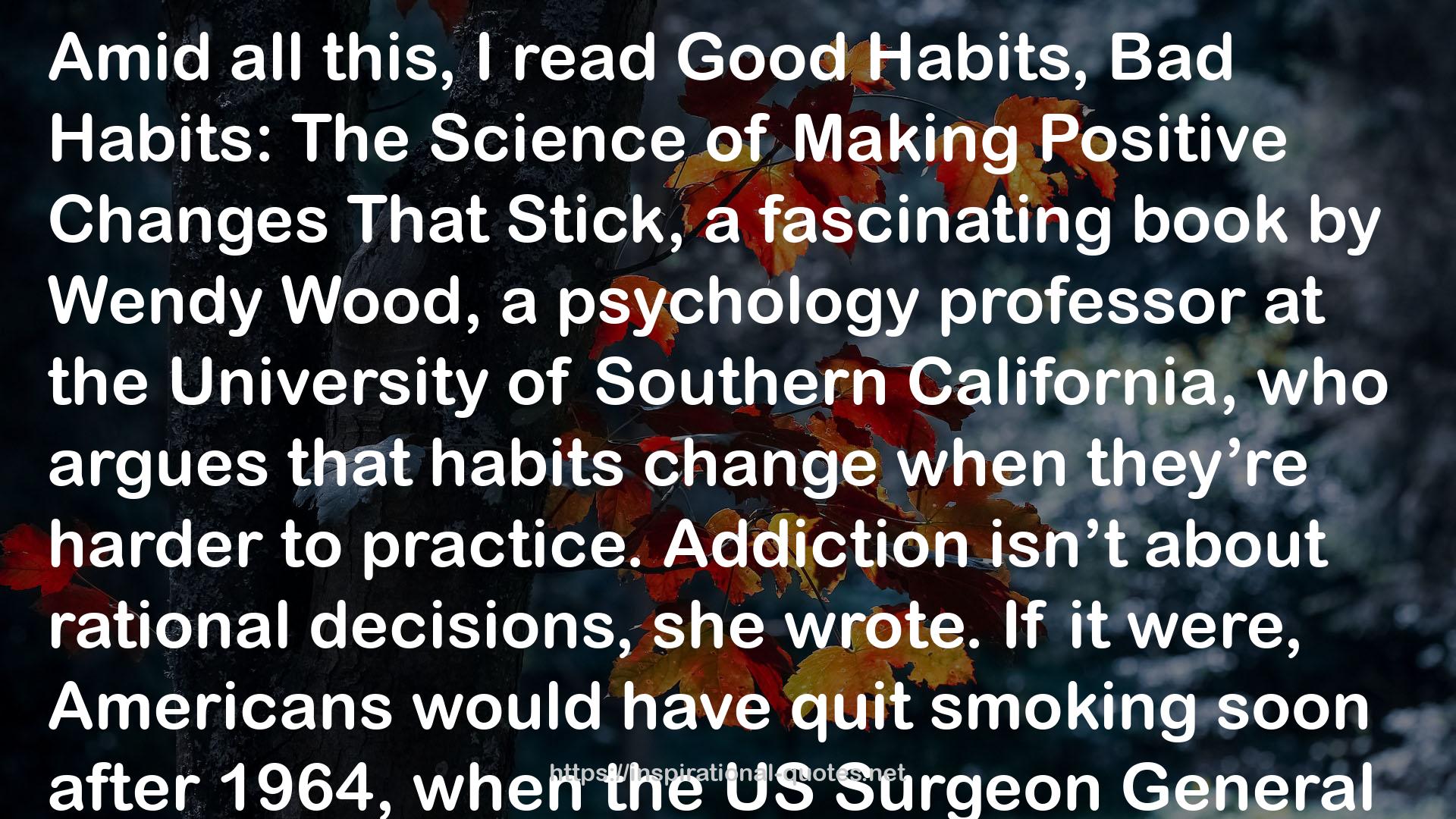" Amid all this, I read Good Habits, Bad Habits: The Science of Making Positive Changes That Stick, a fascinating book by Wendy Wood, a psychology professor at the University of Southern California, who argues that habits change when they’re harder to practice. Addiction isn’t about rational decisions, she wrote. If it were, Americans would have quit smoking soon after 1964, when the US Surgeon General issued his first report on its risks. American nicotine addicts kept smoking, knowing they were killing themselves, because nicotine had changed their brain chemistry, and cigarettes were everywhere. We stopped smoking, Wood argues, by making it harder to do—adding “friction” to the activity. In other words, we limited access to supply. We removed cigarette vending machines, banned smoking in airports, planes, parks, beaches, bars, restaurants, and offices. By adding friction to smoking, we also removed the brain cues that prompted us to smoke: bars where booze, friends, and cigarettes went together, for example. "
― Sam Quinones , The Least of Us: True Tales of America and Hope in the Time of Fentanyl and Meth
